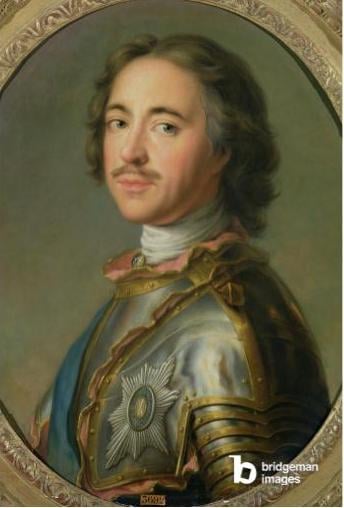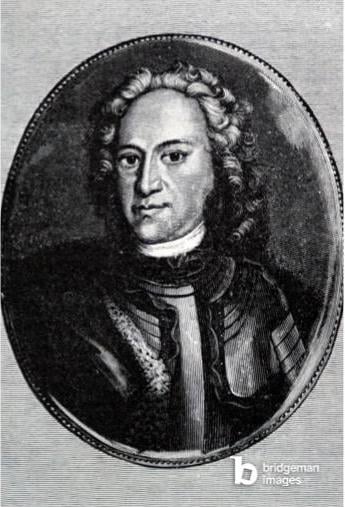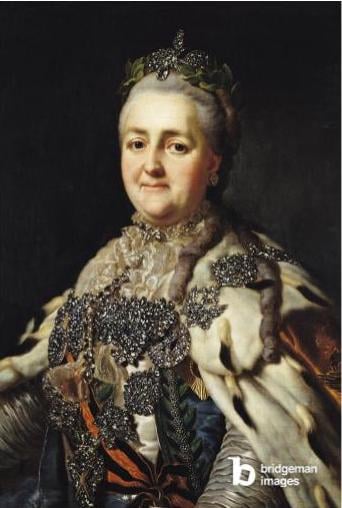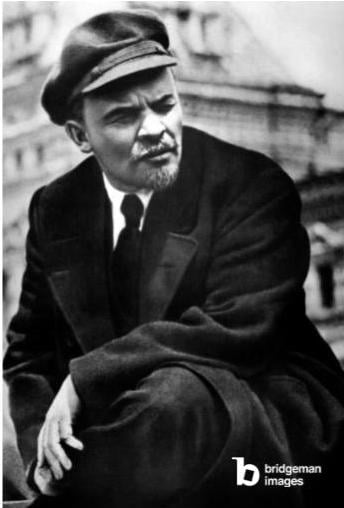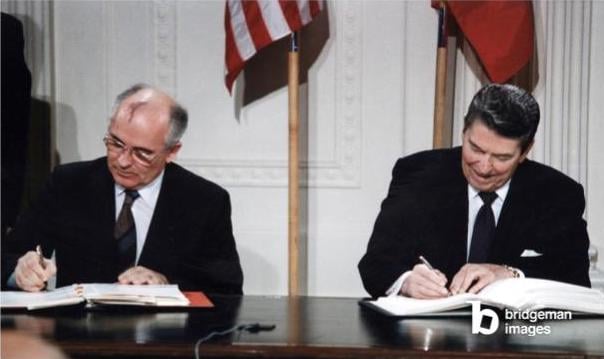
A brief history of Russian leaders and historic events
The Russian state can be traced as far back as the sixteenth century to the rule of Ivan the Terrible. Under Ivan, the warring factions, which had previously characterised the Russian political landscape, were unified, creating an early blueprint for a centralised body of governance. Ivan oversaw significant developments during his long rule from 1547 to 1584; chief among these was the establishment of a standing Russian army. However, personal and domestic chaos blighted many of his achievements, and by the time he died, Russia was economically deprived and politically unstable.
Uncertainty endured for almost a century thereafter. It was not until 1682, and the coronation of Pyotr Alekséyevich (Peter the Great) that Russia was similarly unified under a single ruler. A student of Western thought and culture, he remodelled Russian statecraft along European lines, seeking an economic and philosophical proximity with the centres of modern industrialism. Along with his sweeping political reforms, Peter is also remembered for his successful military campaigns which resulted in the expansion of Russia’s territory.
Russia did not have to wait long for another leader of Peter’s calibre. Just four decades after his death, Catherine the Great assumed the throne and set about carrying out his legacy. Like Peter, Catherine staunchly believed in the power of culture and in Western thought, and particularly the Enlightenment movement sweeping across Europe at the time. She ushered in the Golden Age in Russia; a period defined by the unbridled growth of culture and art, continued military expansion and the development of industry. Under Catherine, Russia joined the ranks of the world’s great powers.
The Russian monarchy, through its subsequent leaders, succeeded in maintaining Russia’s status over the next century. It was not until the beginning of the twentieth, when, under the reign of Tsar Nicholas II, the crown’s grip on power deteriorated, and never recovered.
When revolution came to Russia, it was largely due to Nicholas II’s leadership failures. These were manifold: he led Russia into a disastrous war with Japan, oversaw the massacre of peaceful protesters and, perhaps most famously, encouraged a scandalous relationship between the royal family and the Siberian mystic, Rasputin. Finally, he wilfully ignored domestic unrest and committed Russia to World War One, at a devastating cost to life. Despite this however, hindsight shows that Nicholas was also a victim of his times. His total power had no place in the rapidly modernising world, so he was removed from power and put to the sword. A political movement then arose that altered the landscape of international politics. First articulated by Karl Marx, before being put into effect by Vladimir Lenin, the communist state was born. It ushered in a new era in Russian life with radically new cultural forms. Today characterised by Russian poster art and Russian propaganda, art in Russia during this period has come to manifest the reality of Soviet society most clearly. Celebrated for its remarkable insight into a profoundly influential period, collections such as the Gamborg Collection - which focuses on telling the stories of everyday men and women in Soviet Russia - have been created to pay tribute to this art form.
Famous Russian personalities
Ivan the Terrible
The first leader to declare himself tsar of Russia, Ivan Vasilyevich ruled from 1547 to 1584. His reign saw the establishment of a centrally administered state; a basis of the modern Russian political organisation. To achieve this, he carried out sustained and violent campaigns against the hereditary nobility, for which his title of ‘The Terrible’ is credited.
Peter the Great
Peter Alekséyevich became one of the most celebrated leaders in Russian history. He came to power only through good fortune. In 1676, on the death of his father Tsar Alexis of Russia, Peter’s two half-brothers bore claim to power. Both, however, were sickly and died young, allowing Peter to take the Tsarship in 1682, up until his death in 1725.
Alexei Petrovich, Tsarevich of Russia
Despite fostering fourteen children, Peter the Great died leaving Russia without a male heir. This would not have been the case had he not had such fraught relations with the only son who lived into adulthood: Alexei Petrovich. Alexei was raised by his mother, whose relationship with Peter was characterised by mutual hatred. For this, Alexei resented his father and defected to Austria. For this treason, Peter the Great executed his eldest son and heir to the throne.
Peter III of Russia
Born Charles Peter Ulrich, Peter became Tsar in 1762 and proved immediately unpopular; he spoke little Russian, he pursued policies benefitting his birthplace Prussia, and his marriage to the then Princess Sophie of Anhalt-Zerbs was rife with scandal. Ultimately, the Russian military revolted against him, and instead pledged allegiance to his wife; she usurped her husband to take control of the throne and was henceforth known as Catherine the Great.
Catherine the Great
Russia’s longest ruling female, Catherine’s reign ushered in the period for which Russian Imperialism is best remembered. Known as the Russian Golden Age, Catherine’s legacy is best characterised by her twin achievements of cultural invigoration and military expansion. She founded many important institutions still alive today. Chief among these being the Smolny Institute, Russia’s first educational establishment for women.
Tsar Nicholas II
Nicholas II, the last emperor of Russia, and his family were executed in 1918 by Bolshevik revolutionaries. Having already abdicated, Nicholas spent the last year of his life imprisoned in the Siberian wilderness. A deeply religious man, he sought to continue the social and political traditions he inherited. This set him mortally at odds with the Russia he was governing.
Rasputin
Few historical figures have captured the imagination like the illiterate Siberian mystic, Grigori Rasputin. A self-proclaimed holy man, Rasputin was born in 1869 and, though he held no official position in the Russian Orthodox Church, lived and worked as a monk during his early years in rural Siberia. Through a series of remarkable events, Rasputin ingratiated himself with the royal family, and particularly with Empress Alexandra Feodorovna. Rumours of romantic relations between the two scandalised Russia, and Rasputin became the focus of a national personality cult. He was assassinated in 1916 by a group of nobles seeking to preserve the crown’s legitimacy.
Lenin
The ideological force behind the Bolshevik revolution, Lenin is the iconic figurehead of communism in Russia. Radical, intelligent and ruthless he devoted his life to the creation of a proletariat state, as defined by Marx. The first chairman of the Soviet Union, he ordered the execution of the Romanov’s. His death made him the centre of an international cult of personality.
Joseph Stalin
If Lenin paved the way for a Communist state in Russia, it was under Joseph Stalin that its image was fulfilled. During the early days of the Bolshevik Revolution, Stalin gained Lenin’s favour as a fierce and loyal operative in the Caucasus’. Born to a poor family in modern-day Georgia, Stalin quickly climbed the ladder of the Bolshevik establishment, proving himself ideologically committed to a Leninist interpretation of Marxism. Before long, he was an entrusted party fundraiser and editor of its newspaper.
Stalin assumed leadership after Lenin’s death in 1924. Central to his rule was the mission to unite the nation under a a structured socialist dogma. He ushered in a period of intense agrarian and industrial development, which ultimately led to disruptions in food productions and sustained periods of famine. Under his stewardship, Communism morphed from its Leninist roots to the Soviet totalitarianism it is remembered for today. Nevertheless, Stalin became the subject of an intense and pervasive cult of personality, fuelled in part by his wartime achievements.
Historic Events
The Oprichnina
The defining policy of Ivan the Terrible’s reign, the Oprichnina was designed for the mass oppression of the noble classes who threatened Ivan’s power. It definitively altered the landscape of Russian governmental structure and established the modern Russian political organisation. Henceforth, the Tsarship would be defined by the autocracy and despotism for which it is still known.
Succession crisis
Ivan the Terrible’s political successes were marred by personal chaos. In 1581, in a fit of rage, Ivan murdered his only son and heir to the throne, creating a succession crisis which led to a sustained period of political and social unrest in Russia. Ivan’s outbursts distinguished the nature of the Tsarship as absolutist, and answerable only to God.
The Beard Tax
A seemingly banal development, the tax which Peter the Great imposed on long beards and traditional robes in September 1698, indicates an important philosophical phenomena: the desire to Western Russia. Social modernisation was a defining aspect to Peter’s rule, and the beard tax - which required western dress in government and restriction of beards - politically embodies it.
Establishment of the Russian Navy
Among Peter the Great’s most pressing desires was the growth of Russia’s position at sea. To accomplish this, Peter waged war against the Ottoman Empire for part-control of the Black Sea. He successfully captured the Ottoman fortress of Azov in 1969 and officially founded Russia’s first Naval base in Taganrog.
Love and Power
Catherine the Great was born with no claim to the Russian throne, but the force of her will and ambition put her there. Catherine came into association with the Tsarship through her marriage to Peter III, who had been declared presumptive to the Russian throne in 1742 by Empress Elizabeth of Russia. Their marriage broke down immediately, but Catherine learned Russian, took an interest in statecraft and threw herself into contemporary culture. Conversely, Peter refused to amalgamate himself, and became an unpopular and incompetent leader. In 1762, just six months after her husband took power, Catherine plotted with various nobles and the Russian military, to usurp him. Her coup was successful, and her reign lasted over thirty years.
The Russian Golden Age
This was the name given to the Catherinian era during which Russian art and culture flourished. As a staunch follower of the Enlightenment, Catherine led by example. Under her reign there was a return to classical styles, and the nobility, freed from compulsory military service, were encouraged to patronise the arts.
The Russo-Japanese War
In 1904, Japan was advancing territorial conquests into Manchuria, and encroaching on Russian territory. Seeing an easily winnable battle, Nicholas II committed Russia to war with Japan, largely to boost morale and patriotic sentiment. However, the Russian armed forces were forced to travel half-way around the globe to meet a Japanese army which crushed them, and the Russian fleet was obliterated. This ill-judged decision consolidated domestic dissatisfaction with Nicholas.
World War One
Nicholas II’s commitment to the Great War is considered by many historians as the last nail in the coffin for the Tsar. Wilfully ignoring domestic unrest, Nicholas spent much of his final months in power at the front, allowing revolution to grow at home. It is estimated that at least 1.5 million Russians were killed in the war. This is does not include civilian deaths.
February Revolution
The first of the two revolutions of 1917, the February Revolution saw mass protests erupt against a shortage of food rations. Lasting over a week, it led to mass-arrests, and violent clashes. When the Garrison Forces at the Capital sided with the revolutionaries, Nicholas II was forced to abdicate.
October Revolution
The October Revolution was a coup by the Bolshevik party, amidst the power vacuum created by the Tsar’s abdication. Overthrowing the transitional government, the Bolsheviks - with Vladimir Lenin as their ruler - took over official buildings and established themselves as the new government. It was not until 1923, after anti-Bolshevik sentiment had been squashed, that the Soviet Union was officially established. Read on more about the causes of the Russian Revolutions.
Fall of the Soviet Union
Such was the intensity of Stalin’s grip on power that his death in 1953 left a profound void at the heart of the Soviet party. About the only thing the Soviet leaders squabbling to replace him could agree on was how best to renounce Stalin’s most brutal policies while simultaneously striving to maintain his vice-like grip on power. Internationally, it was thought that the best way to conserve Communism’s reputation was through engagement in the Cold War effort with Western powers. A mutually costly arms race with the United States sought to consolidate authority in Eastern Europe but ultimately proved economically destructive.
In 1985, the long-serving party official Michael Gorbachev assumed control and set out to implement a series of radical economic and political reforms. Rather than preventing the economic decline which had thus far characterised post-Stalin Soviet policy, these had the reverse effect, provoking a military coup and eventually, the dissolution of the Soviet Union.
The Cold War and the Cuban Missile Crisis
The Cold War refers to the period of geo-political tension between the West and the USSR immediately following World War Two. It is characterised most obviously by the terse political brinksmanship which spoke to a reluctance for engaging in outright military conflict. This is perhaps best illustrated by the race between the United States and the Soviet Union to develop nuclear arsenals as a mutually assured military deterrent. The adverse effect of this policy became an almost paranoid need to develop weaponry capable of unthinkable destruction. As a result, on numerous occasions, tensions grew to near breaking point.
The Cuban Missile Crisis is considered the closest the Cold War came to boiling over. The confrontation arose when American deployments of missiles in Italy and Turkey were matched by Soviet deployments in Cuba - just ninety miles from Florida and then a communist vessel. For weeks, the world held its breath as the two superpowers took part in tense and public negotiations. Finally, after more than a month, de-escalation was agreed and nuclear war averted.
Fall of the Berlin Wall
In the wake of World War II, Europe was forced to rework its borders. A defeated Germany became the site on which these new lines were drawn, and the uneasy alliance forged between allied forces and the USSR in mutual opposition to Fascism their political framework. Out of this arose the Iron Curtain: a political boundary that would divide East from West, separating the USSR from Western Europe. As tensions grew throughout the Cold War years, this line became increasingly fortified, a symbolic embodiment of ideological distance. At its heart, was Berlin. The German capital was the epicentre of division, cut physically in half by the Berlin Wall. For more than twenty-five years it physically blocked immigration, defection and communication from East Berlin - controlled by the Soviets - to the West. It was only in 1989, when a series of revolutions swept through the Eastern bloc, provoking its collapse, that the Berlin Wall fell. A seminal moment in the political landscape of the 20th century, this event caused not only brought an end to the physical reality of the Iron Curtain, but fundamentally undermined the Soviet project.





